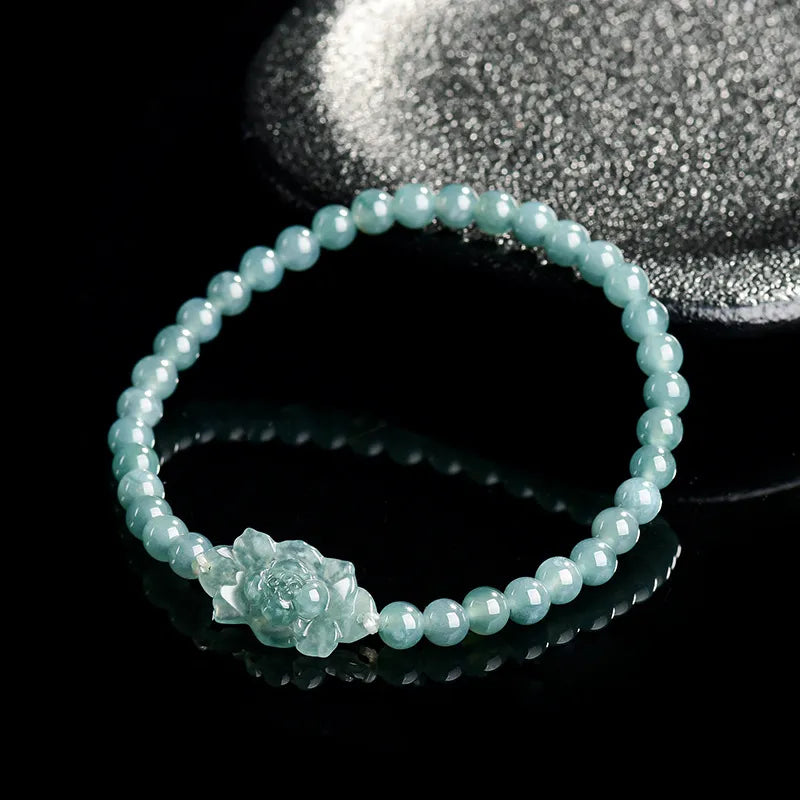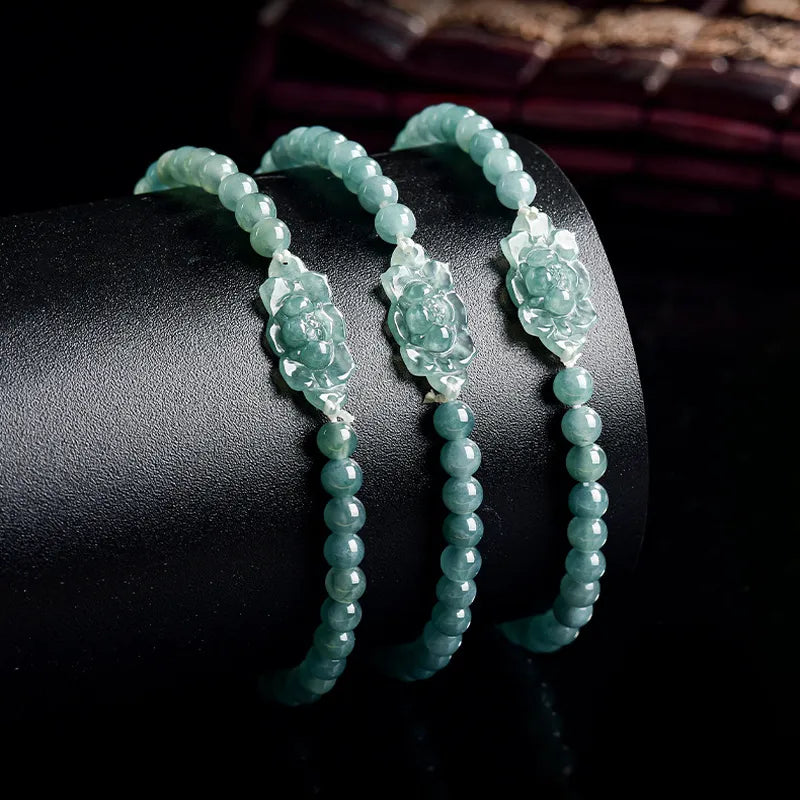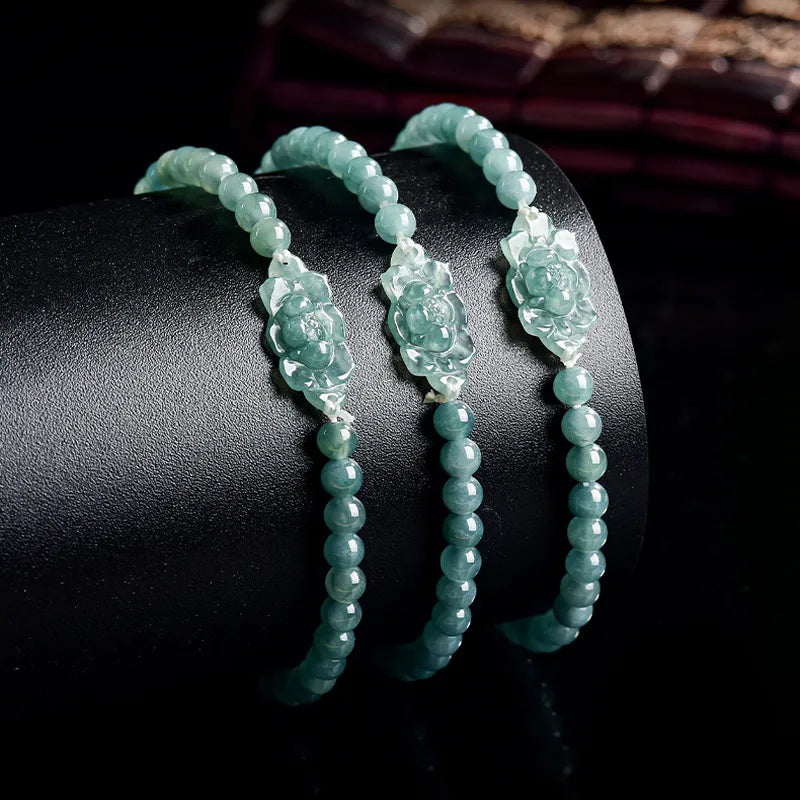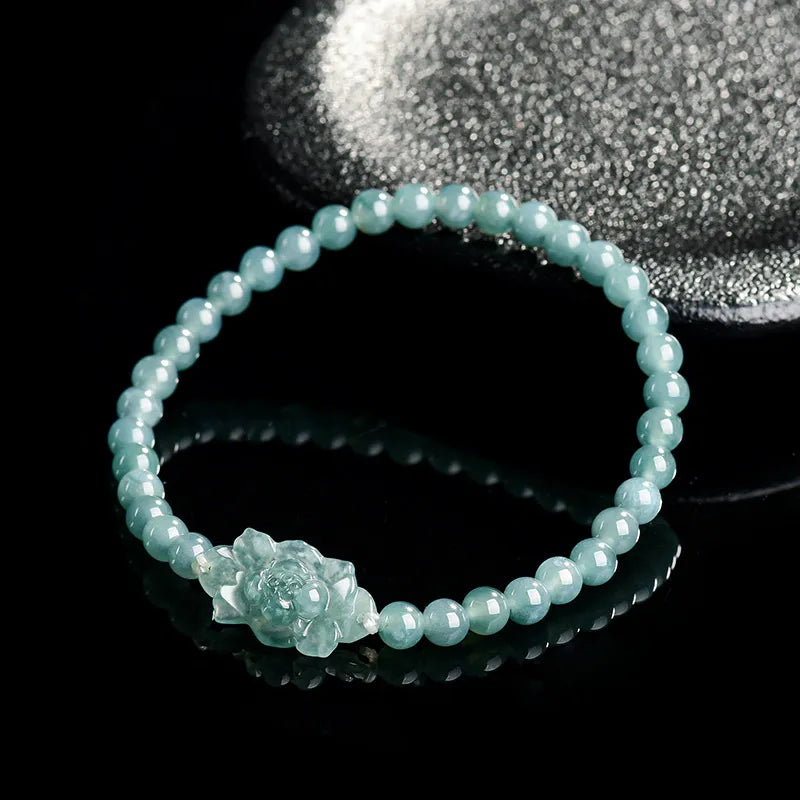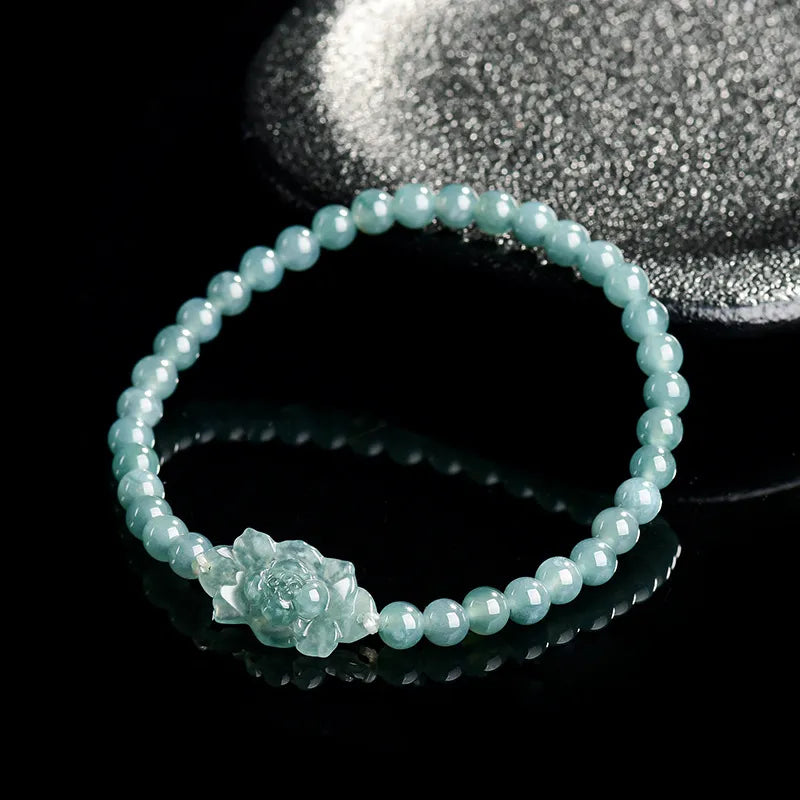How to Determine Acceptable Flaws in Jade Bangle Bracelets: A Practical Guide
Evaluating flaws in jade bangles requires understanding natural variations, structural risks, and aesthetic trade-offs. Unlike synthetic materials, jade’s organic formation process often results in imperfections that range from minor to significant. Below, we explore how to assess flaws based on their type, location, and impact on durability and visual appeal.

1. Types of Natural Flaws and Their Characteristics
Jade flaws fall into distinct categories, each affecting the bangle differently.
- Inclusions: These are internal minerals or impurities trapped during jade formation. Common inclusions include white streaks (from quartz), black spots (from chromite), or golden threads (from iron oxides). Small, scattered inclusions often enhance uniqueness, while clustered or large inclusions may weaken the structure.
- Cracks vs. Fissures: Cracks are surface breaks that penetrate deeply, posing a high risk of breakage. Fissures, however, are natural hairline fractures within the stone that do not compromise integrity if shallow and stable.
- Color Zoning: Uneven color distribution, such as patches of lighter or darker green in jadeite, is a natural trait. While some zoning adds character, abrupt color transitions may indicate dye treatment or artificial enhancement.
- Surface Pits: Tiny divots or pits on the bangle’s exterior result from mineral erosion or polishing imperfections. These are generally harmless unless they compromise smoothness or catch on fabric.
Visual Tip: Use a magnifying glass to inspect inclusions. Translucent jade with fine, dispersed inclusions often appears more valuable than opaque stone with large, opaque flaws.
2. Structural Integrity: Flaws That Affect Durability
Certain flaws compromise the bangle’s ability to withstand daily wear.
- Deep Cracks: Any crack visible to the naked eye and extending through the bangle’s thickness is a red flag. Even minor impacts can cause these cracks to propagate, leading to sudden breakage.
- Internal Fractures: If a flaw appears as a white, chalky line under light, it may indicate internal stress fractures. These are unstable and can worsen over time, especially in thin-walled bangles.
- Weak Edges: Flaws concentrated near the bangle’s inner or outer edges are risky. Edges already endure more pressure during sliding on/off the hand, and flaws here accelerate wear.
Testing Method: Gently tap the bangle with your fingernail. A clear, ringing sound suggests solidity, while a dull thud may indicate internal flaws or loose structures.
3. Aesthetic Tolerance: Flaws That Impact Visual Appeal
Personal preference plays a key role in determining acceptable aesthetic flaws.
- Visible Inclusions: Small, symmetrical inclusions (e.g., a single black dot near the clasp) may be overlooked, while large, asymmetrical ones (e.g., a white streak across the face) can distract from the bangle’s beauty.
- Surface Scratches: Fine scratches from normal wear are inevitable but can be polished out. Deep gouges, however, create uneven reflections and reduce luster.
- Color Consistency: Subtle color variations (e.g., a gradient from deep green to light green) are natural and desirable. Patchy or mottled coloring, though, may look artificial or poorly crafted.
Cultural Context: In some traditions, flaws like "water lines" (thin, translucent streaks) are considered lucky or symbolic. Research cultural meanings if the bangle holds heritage value.
4. Location of Flaws and Their Practical Impact
The position of a flaw influences both durability and daily usability.
- Outer Surface Flaws: Scratches or pits on the exterior are more noticeable but less likely to cause structural failure. These can often be buffed out by a professional.
- Inner Surface Flaws: Flaws on the inner edge (where the bangle contacts the skin) may irritate the wrist during prolonged wear. Rough or jagged flaws here are unacceptable for comfort.
- Flaw Proximity to Design Elements: If the bangle features carvings or engravings, flaws near these areas can detract from the artwork’s clarity. For example, a crack through a floral motif may disrupt its visual flow.
Wearability Check: Slide the bangle onto your wrist and rotate it. Flaws that pinch the skin or catch on clothing should be reconsidered, even if minor.
5. Flaw Severity Scale: Minor, Moderate, and Severe
Classifying flaws helps prioritize which are tolerable and which require avoidance.
- Minor Flaws: These include pinpoint inclusions, faint surface scratches, or tiny pits. They do not affect durability and are barely noticeable to the naked eye.
- Moderate Flaws: Shallow fissures, small color patches, or mild edge irregularities fall here. These may slightly reduce value but remain wearable with care.
- Severe Flaws: Deep cracks, large opaque inclusions, or structural instability classify as severe. These pose high risks of breakage and should be avoided, especially in thin or wide bangles.
Professional Insight: Jewelers often use terms like "eye-clean" (flaws invisible without magnification) to describe high-quality jade. Aim for this standard if prioritizing aesthetics.
6. Lighting and Inspection Techniques for Flaw Detection
Proper inspection reveals flaws that may be hidden under casual observation.
- Natural Light: Examine the bangle outdoors or near a window. Direct sunlight highlights internal inclusions and color inconsistencies more clearly than artificial light.
- Backlighting: Hold the bangle against a light source (e.g., a lamp). This reveals internal fractures or uneven color distribution that may not be visible on the surface.
- Rotation Test: Slowly rotate the bangle under light while tilting it at different angles. Flaws like cracks or pits often become visible only at specific angles.
Tool Suggestion: A 10x jeweler’s loupe is ideal for detailed inspection. If unavailable, use a smartphone camera with macro mode to zoom in on suspicious areas.
7. Long-Term Wear and Flaw Progression
Some flaws worsen over time, affecting the bangle’s lifespan.
- Stable Flaws: Inclusions or fissures that do not extend or deepen with wear are generally safe. These flaws remain static and do not compromise the bangle’s integrity.
- Progressive Flaws: Cracks that grow longer or wider over months indicate ongoing stress. This is common in bangles exposed to frequent impacts or extreme temperature changes.
- Environmental Factors: Humidity, heat, and chemicals (e.g., lotions, perfumes) can accelerate flaw progression. Store the bangle in a dry, cool place and clean it gently to minimize deterioration.
Maintenance Tip: Have the bangle professionally inspected annually. A jeweler can identify early signs of flaw progression and recommend polishing or stabilization.
Final Considerations
Acceptable flaws depend on the bangle’s purpose, your tolerance for imperfections, and its cultural significance. A bangle worn daily may require stricter flaw standards than one reserved for special occasions. Prioritize structural safety over aesthetics if the bangle will endure active use. Ultimately, transparency from the seller about known flaws ensures informed decision-making.
